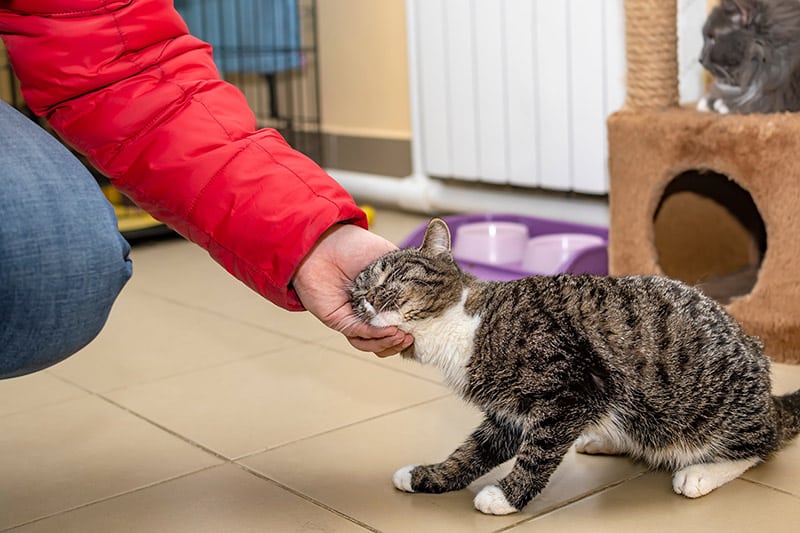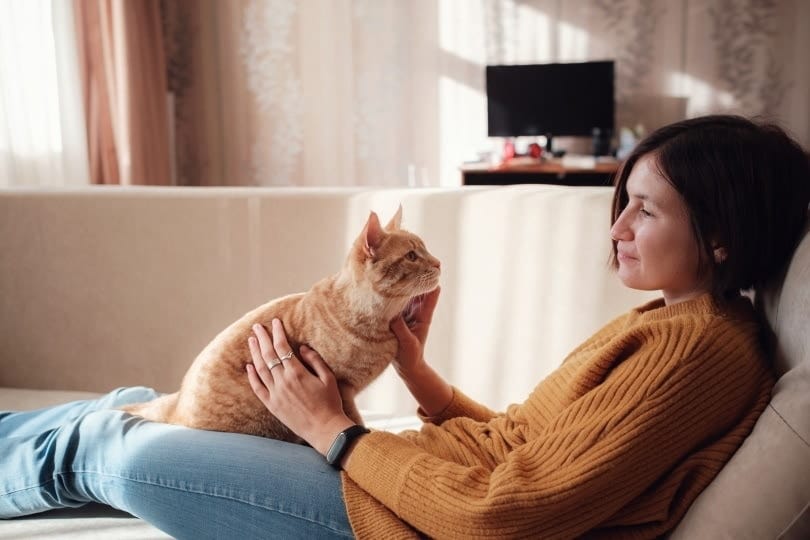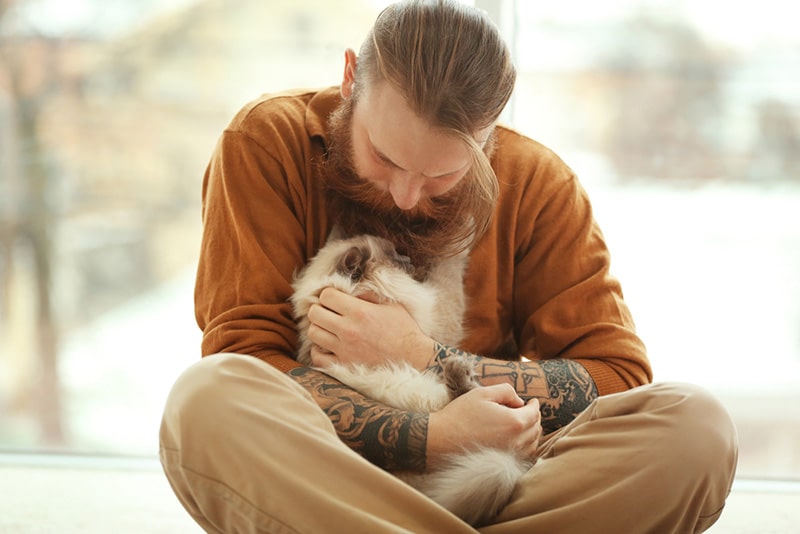Click to Skip Ahead
The loss of a cat is never easy, and the fact that grieving a pet is a disenfranchised grief (or one that isn’t always recognized by the society we live in) makes the loss that much harder at times1. What you do after your cat dies is up to you; all individuals go through different grieving processes. Some may never adopt another feline again, while others may want to get another cat right away.
But is it disrespectful to want to get another cat right after the death of your cat? It isn’t disrespectful, but it isn’t always the best idea either. Why you’re adopting another cat so soon is more important than the fact that you are adopting another kitty. If you’re doing it for the wrong reasons, things may not work out so well.
When Should I Adopt a New Cat After One Dies?
When (or if) you decide to adopt a new cat after your previous one passes is up to you. There’s no universal answer to the question of when you should do so. However, waiting at least two to four months is recommended. Not only will waiting for this long let any other cats (or other animals) in the home adapt to losing a friend, but it will also give you time to grieve and adapt.
Plus, waiting a bit can help you figure out the reasons you want to adopt a new cat. Are you adopting a new cat to fill a hole in your heart, or are you genuinely emotionally ready to have a new kitty in your home? If you aren’t emotionally prepared, you may end up adopting the first cat you come across in a desperate attempt to fill the void your previous kitty left behind, which means you could end up with a cat who isn’t a good fit. And that could lead to more heartbreak for everyone.

Benefits of Adopting a Cat Right Away
What are the benefits of adopting a cat right away versus waiting a few months?
For starters, it helps keep life normal. You’re used to having your previous cat around; you’re used to them making noise, getting into things, and following you around. Adopting a new cat right away means getting that sort of thing back in your life, which can help you get back to your normal daily routine. This routine may look a bit different than your old one since cats are individuals, but it will be a routine. And routine can be especially good when you’re grieving.
Another benefit of adopting a cat right away is that it may be the only reason you get out of bed some days. Anyone who says grieving a pet shouldn’t be as big a deal as grieving a person or should take less time is wrong. A pet dying can be a huge loss, and your mental health may take a hit. That’s normal. But if you’re grieving to the point where you don’t want to get out of bed or go about your day, having a new cat can help inspire you to get up if only to care for them.

In fact, having a new cat in the home gives you the benefit of having something to focus on that isn’t your grief. You should process your grief, of course, but grieving is painful, and a distraction is always a welcome thing. With a new cat in the home, you can focus on learning their personality, likes, and dislikes rather than constantly focusing on the loss of your last kitty.
Then, there’s the benefit of saving a life. This one has less to do with you than the new feline, but knowing you’ve saved a life may make you feel a little better.

Benefits of Waiting to Adopt a Cat
Of course, there are also benefits to waiting to adopt a cat.
Probably the most significant benefit of waiting to adopt a cat is that it gives you time to properly grieve. By waiting, you take all the time you need to truly process your grief over the loss of your kitty, which allows you to fully heal. It also helps ensure you aren’t unwittingly trying to fill the void where your old kitty was.
Waiting also means you aren’t trying to deal with the stress of adding a new cat to the household while grieving. Adopting a new pet and getting them used to their new home (particularly if you have other animals in the home) can be a bit overwhelming, and that’s something you might not need at the moment.

Not adopting a feline right away allows you to open your heart back up, too. After you lose a cat, you may feel like you’ll never be able to love another kitty again, or you might see your friends’ cats and feel sad because your cat isn’t there. By waiting a few months to adopt, you’re ensuring your heart is ready to love again and that you can wholly accept a new cat into your life.
Finally, waiting gives you time to think about what kind of cat you want to get next. Some people may want to get a cat who is the same breed or looks similar to the one who died. Others may want to go in the complete opposite direction. Waiting gives you the time to figure out what would work best for you and allows you to go out and meet various cats you might want to adopt, which means you’re more likely to make a better decision.
Final Thoughts
Wanting to get another cat right after the death of your cat isn’t disrespectful. It might not be the best idea for everyone, though. There are benefits to adopting another cat right away, but there are benefits to waiting a few months, as well. Think long and hard about why you want to adopt another cat immediately and whether that is the best decision for you before taking any action.
Featured Image Credit: Africa Studio, Shutterstock











